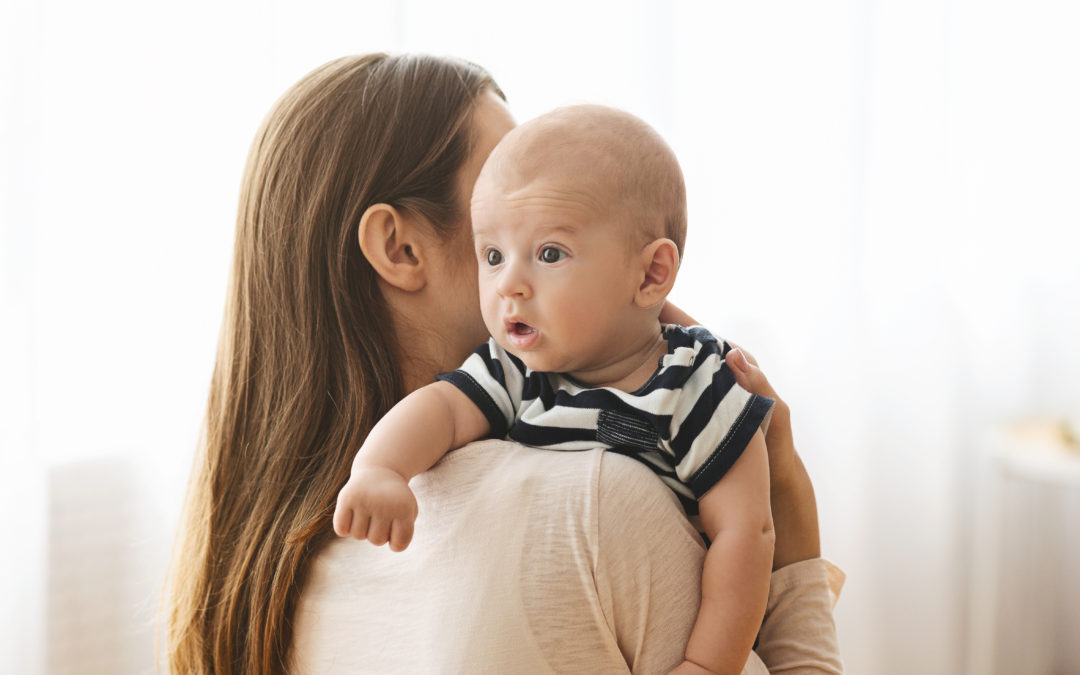It is important to notice burping cues from both breastfed and bottle-fed babies. Both breastfed and bottle-fed babies will swallow air from their feedings which causes gas. If a baby begins to fuss, squirm, or push the nipple out of their mouth, stop and try to burp them. It is important to take the time to burp the baby because the more air swallowed the gassier and fussier, they will get which may result in spitting up.
If a baby is bottle-fed, burp the baby every couple of ounces they eat, unless they show signs before. A breastfed baby should be burped after each breast. If the baby does not burp after 5 minutes, the mom should continue the feeding. Not all breast-fed babies will burp easily and it is ok.
Every baby is different, and it can be difficult to get a baby to burp. Some babies burp right away, and others are harder to get a burp out of. There are a few different ways to burp a baby.
1. Hold baby upright over shoulder and pat or rub their back.
2. Sit the baby on your lap while supporting their head and chest and pat their back
3. Lay baby on stomach across lap and pat/ rub their back
4. Lay baby on back and move their legs like a bicycle to reduce gas
If all these burping methods are attempted and baby still does not burp, try feeding baby a little more and then repeat the burping methods. It is important to get a burp out of baby, so they are more comfortable. Many times, after baby burps, they will eat more. Some babies will get upset if bottle is taken out of mouth to be burped, this is normal.
For more information on when and how to burp a baby during a feed check out www.ncta.online. The online self-paced course Newborn Care Specialist workshop will provide you with more information on how to burp the breastfed and bottle-fed baby.


Recent Comments